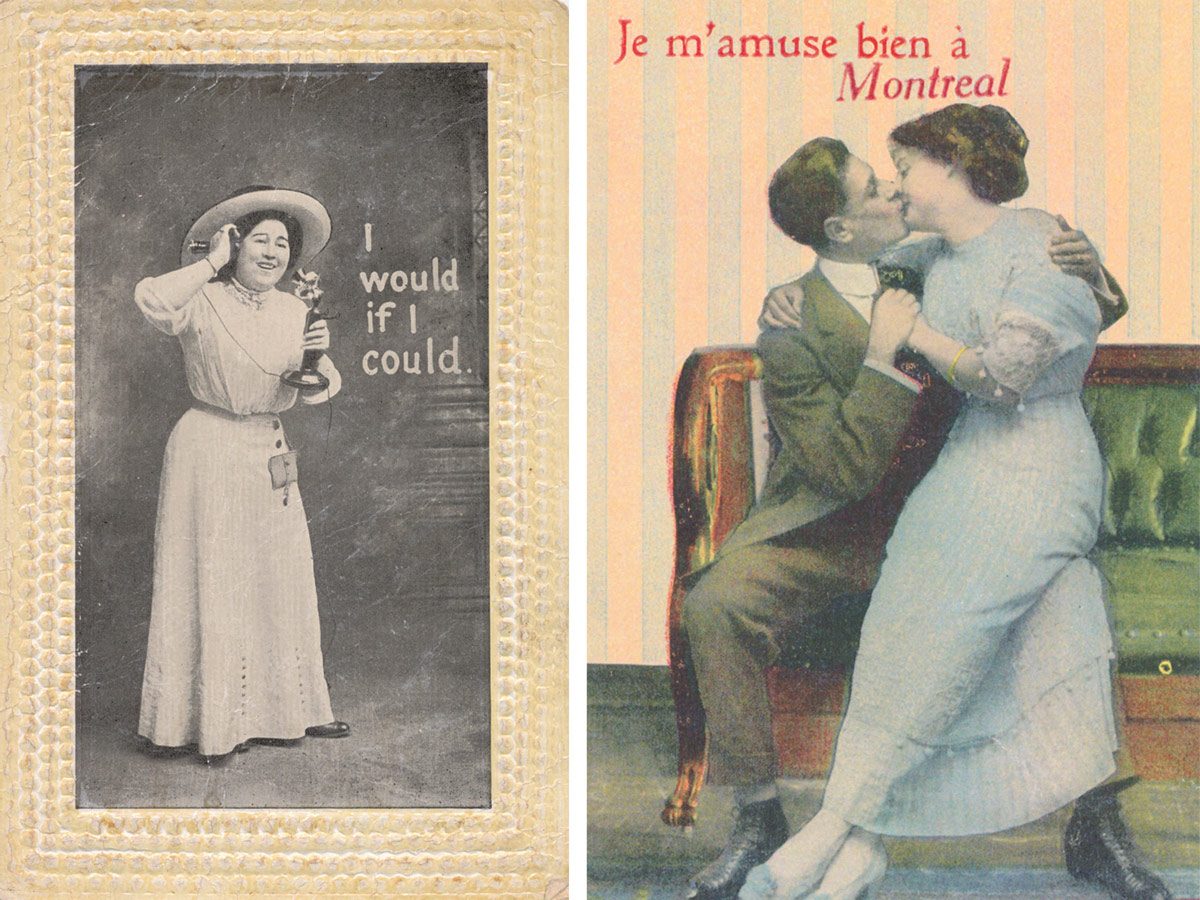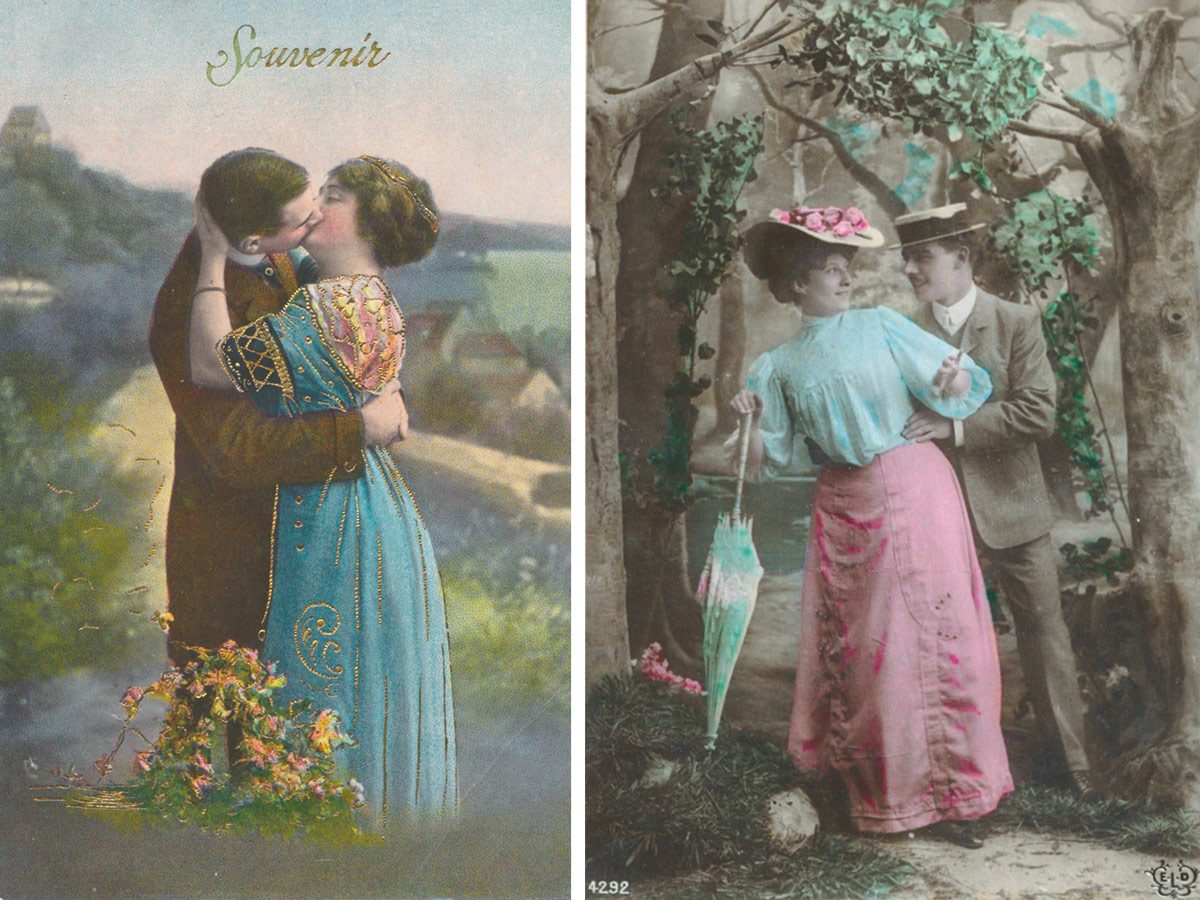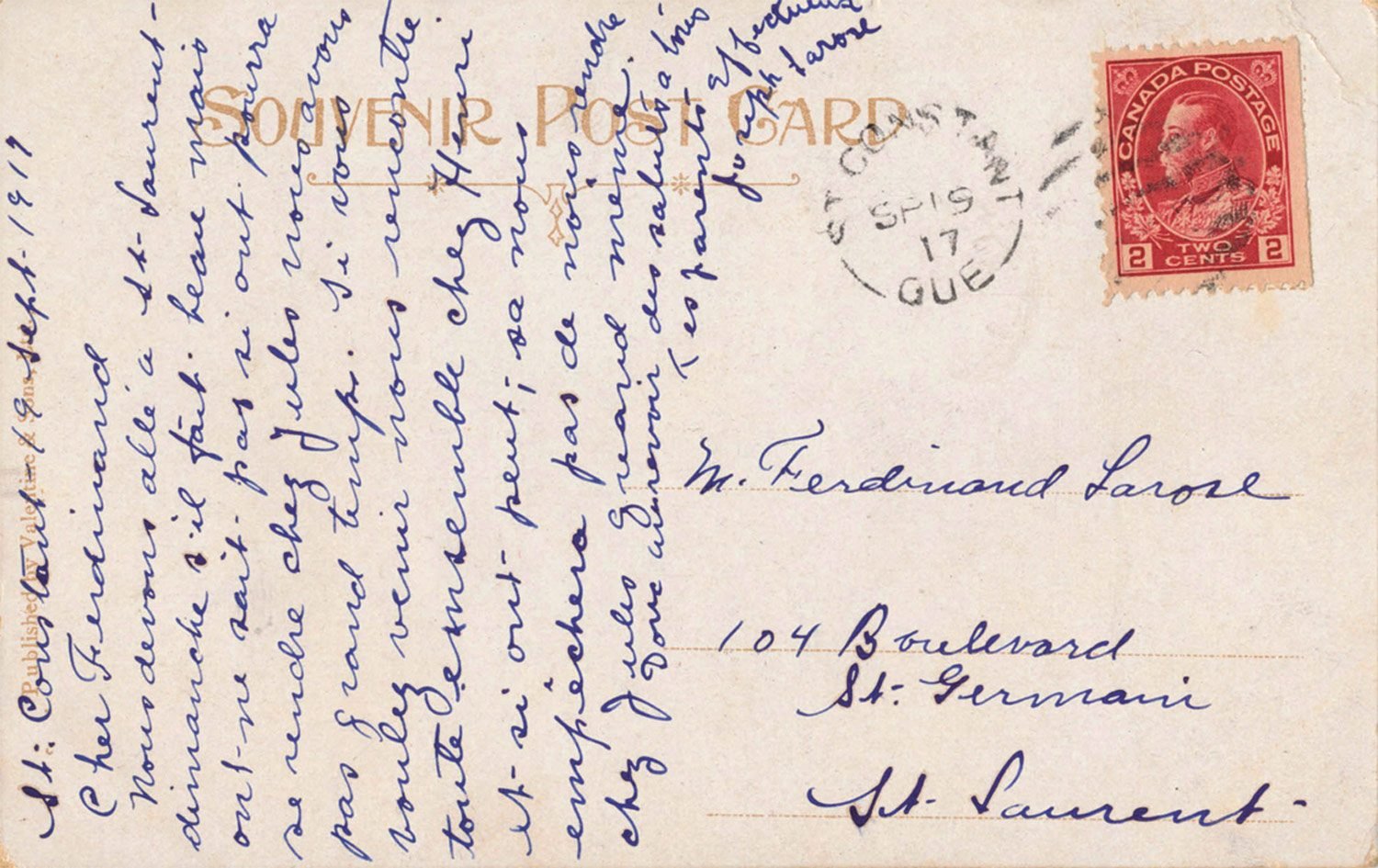
The Heyday of Vintage Postcards
My great-uncle Ferdinand was a very handsome young man and had many girlfriends, as well as a few female cousins, with whom he kept in touch by writing and receiving postcards in the early 1900s. Sadly, Ferdinand had a very short life, dying from Spanish flu in November 1918, just prior to his 24th birthday. As time passed, I ended up inheriting his postcard album and took a real interest in the history of vintage postcards in general.
Postcards became extremely popular during Ferdinand’s glory days in the early 1900s. It seems that Austria was the first country to release this new product in 1869, followed by England, France, Germany, as well as Italy; then Canada and the U.S.A. followed suit.
Before the regular postcard we still use today came into common usage, postcard-style messages from government services were in circulation to, for example, inform citizens of an upcoming vote, providing date, locale and the list of candidates.

The Burgeoning Postcard Industry
Buying a stamp was relatively inexpensive in the early 1900s and so members of a family could reliably and affordably get news to and from one another, as work locations often kept family members apart for varying periods of time.
Postcards were used by many social classes. Even if someone had been to school for only a few years, he or she could usually scribble down a short message when necessary, which often were easiest to understand when read aloud, because the words were frequently spelled out phonetically.
On most of my great-uncle Ferdinand’s postcards, the names of the photographer were not included, nor the printer. It is said, however, that photo studios did a very brisk business during the golden age of postcards, circa 1900 to 1940. Talk of the “postcard industry” sprung into being during the World Fair Exhibitions of that era. In my home province of Quebec, the Pinsonneault brothers—Joseph-Laurent and Alfred-Zénon—born on a farm in Saint-Jacques-le-Mineur (south shore of Montreal) became very well known. Joseph-Laurent moved to the Richelieu area and his brother, to Sherbrooke; and not only did they both take pictures for a living, they also became publishers. Joseph-Laurent won many prizes for the high quality of his photos.
The beauty of postcard photography was not revered by everyone at the time though. Quite often pen pals would use all of the space available and even write or draw a little something on the printed portions of the postcards they were sending.
These Canadian history podcasts are worth adding to your playlist.

Signs of the Time
Many early postcards focused on small villages, highlighting the town’s main street and wooden sidewalks, churches, train station, mills and market place. Others featured photos of working animals; for example, dog carts used for milk delivery were popular on postcards back then; although an original of such a postcard would likely be considered a rare find today, with an asking price in the $25 range.
We are often treated to fascinating sites or historic events on vintage postcards, such as the “Break Neck Steps” on Champlain Street in Quebec City, the Mount Royal Funicular Railway, which transported Montrealers up and down the city’s famous mountain between 1884 and 1918, or the birth of the Dionne quintuplets in Ontario in 1935. Of course, many were messages of friendship, love, congratulations and best wishes on special occasions. Some even featured a family photo, in the same way many of us personalize our greeting cards today.
Romance is, naturally, the major topic of Ferdinand’s album, portraying men and women in various stages of falling in love, often with a few inspirational words printed at the bottom of the image, and a personal message or poem from the sender on the other side; my great-aunt Berthe, a most beautiful young lady, was a gifted writer in this regard.
Today, my cousins Anne, Robert and Yves, and I are connecting with our forebearers by reading their postcard correspondence. And it’s all thanks to Ferdinand, who was such a fine collector.
Next, take a look back at the mail-order house you could purchase from the Eaton’s catalogue.